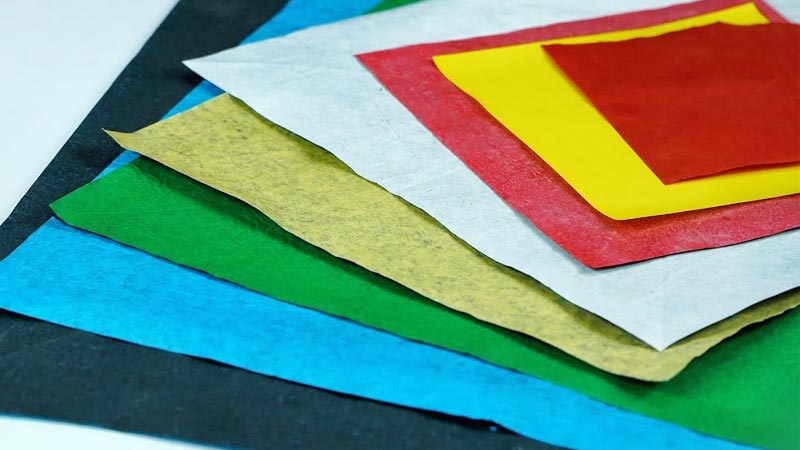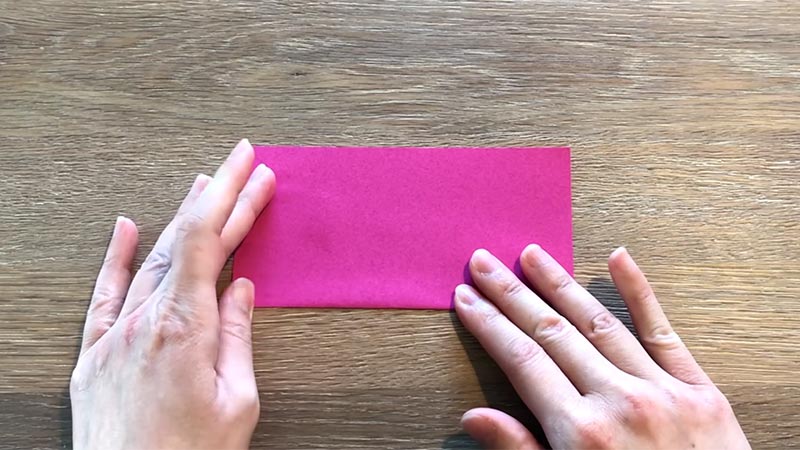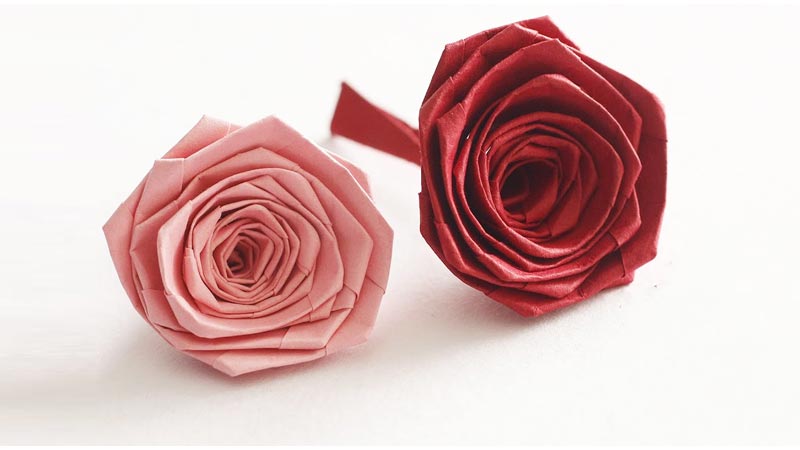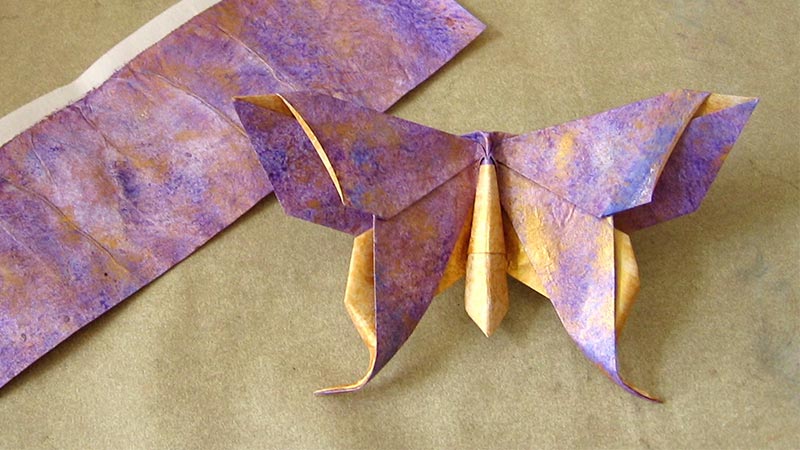Tissue foil paper origami is a captivating fusion of art and engineering, a specialized branch of the ancient Japanese paper-folding tradition that thrives on precision, creativity, and innovation.
This unique medium combines the delicacy of tissue paper with the strength of aluminum foil, offering origami enthusiasts a canvas for crafting intricate, lifelike designs that defy traditional origami’s limitations.
Tissue foil paper’s dual nature allows for the creation of complex models, from lifelike animals and flowers to elaborate modular structures.
It’s a versatile material, cherished by skilled origamists for its ability to hold precise folds and its wide spectrum of colors and patterns, making it an ideal platform for artistic expression and meticulous craftsmanship.

What Is Tissue Foil Paper Origami? -Definition & Features
Tissue foil paper origami, often referred to simply as “tissue foil,” is a specialized type of paper used by origami enthusiasts to create intricate and highly detailed origami models.
It combines the qualities of tissue paper and aluminum foil, offering a unique balance of strength and flexibility.
This unique paper is widely appreciated for its versatility and is particularly well-suited for complex origami designs that require precise folding and shaping.
Here are some key characteristics and aspects of tissue foil paper origami:
Composition
Tissue foil paper is meticulously crafted by sandwiching a thin sheet of tissue paper between two layers of aluminum foil, which are then carefully adhered together.
The tissue paper layer adds color and texture to the paper, while the aluminum foil provides structural integrity.
This unique combination results in a paper that is both decorative and sturdy, offering a distinctive surface for origami artists to work with.
Strength and Durability
The primary advantage of tissue foil paper is its enhanced strength and durability. Compared to traditional origami paper, tissue foil is more resistant to wear and tear.
It can maintain its shape, hold intricate creases, and withstand the stresses of complex folding techniques.
This makes it the material of choice for ambitious origami projects that demand precision and intricate folds.
Color Options
Tissue foil paper comes in a wide array of colors and designs. This diversity in color options allows origamists to select paper that complements the theme of their project.
Whether you’re creating an origami animal, a floral design, or a geometric structure, tissue foil comes in a spectrum of hues and patterns to suit your creative vision.
Wet Folding
Tissue foil is notably adaptable to the technique of wet folding, a method where the paper is lightly dampened to make it more pliable.
The moisture allows the paper to be molded and sculpted with greater ease, facilitating the creation of smooth curves and intricate details.
Wet folding is often employed when working with tissue foil to add organic and lifelike qualities to origami creations.
Complex Models
Tissue foil paper is particularly well-suited for crafting complex origami models. Origamists who seek to create intricate animals, insects, or modular structures turn to tissue foil for its ability to handle the multiple layers of detail required for such designs.
The added strength and stability of the paper enable artists to push the boundaries of their origami skills and imagination.
Challenges
While tissue foil paper offers numerous advantages, it is not without its challenges. Due to its increased rigidity compared to standard origami paper, some folds can be more demanding, and precision becomes paramount.
Novice origami practitioners may find it a bit challenging to work with tissue foil, but with practice, it can open up new creative possibilities.
Specialized Craft
Tissue foil origami is typically a hobby embraced by those who have a deep appreciation for the art of paper folding.
Enthusiasts often spend a considerable amount of time refining their skills, experimenting with different paper types, and exploring various folding techniques to achieve the best results.
This specialized craft requires a dedication to detail and a passion for pushing the boundaries of origami artistry.
What Is Tissue Foil Paper for Origami Made Of?

Tissue foil paper, a specialized material used in origami, is composed of two primary components: tissue paper and aluminum foil.
These two materials are carefully combined to create a paper that exhibits a unique blend of characteristics, making it ideal for complex and intricate origami designs.
Here’s a breakdown of the components that make up tissue foil paper:
Tissue Paper
The tissue paper used in tissue foil is typically a thin, delicate, and often translucent sheet of paper.
It is chosen for its aesthetic qualities, as it provides color, texture, and opacity to the final origami creation.
The tissue paper adds a decorative and artistic dimension to the paper, allowing origamists to choose from a wide range of colors and patterns to suit their creative visions.
Aluminum Foil
The other crucial component is a thin sheet of aluminum foil. This foil layer is responsible for giving tissue foil paper its strength and rigidity.
The foil provides the necessary structural support for the paper, allowing it to maintain creases and folds with precision.
This added strength is what makes tissue foil paper superior to standard origami paper when it comes to complex or intricate origami designs.
For What Tissue Foil Paper Origami Is Used?

Tissue foil paper origami finds applications in various artistic and creative endeavors. This specialized paper is primarily used for intricate and complex origami designs, catering to the needs of experienced origamists who seek to push the boundaries of their craft.
Here are some of the key purposes and applications of tissue foil paper origami:
Complex Origami Models
Tissue foil paper is particularly well-suited for creating complex and intricate origami models. Origamists use it to craft lifelike animals, intricate insects, detailed flowers, and other intricate designs that demand precise folding and shaping.
The enhanced strength and durability of tissue foil paper allow artists to add multiple layers of detail to their creations.
Modular Origami
Modular origami involves assembling multiple folded units to create larger geometric or abstract structures.
Tissue foil is ideal for this purpose as it can maintain the integrity of individual units and ensure a stable and precise assembly.
Modular origami artists often appreciate tissue foil paper for its role in creating visually stunning, three-dimensional sculptures.
Wet Folding
Tissue foil paper is particularly compatible with the technique of wet folding. In wet folding, the paper is lightly moistened to make it more pliable, allowing for the creation of smooth curves and organic shapes.
Artists use tissue foil for wet folding to add lifelike qualities to origami models, especially in the creation of animals and natural forms.
Display Pieces and Art Installations
The versatility and visual appeal of tissue foil paper make it a favored choice for origami artists who create origami art pieces for exhibitions, galleries, or installations.
Its vibrant colors, patterns, and the ability to maintain its shape over time make it suitable for origami art that is meant to be displayed and appreciated by a wider audience.
Custom Origami Gifts
Origami enthusiasts often use tissue foil paper to create custom gifts or decorations for special occasions.
From handcrafted origami flowers as wedding décor to intricate origami animals as personalized gifts, tissue foil paper allows for the creation of unique and meaningful presents.
Artistic Expression
Tissue foil paper origami provides a unique medium for artistic expression. Many origamists use it to explore their creativity and develop their artistic skills.
The combination of the paper’s structural integrity and aesthetic appeal offers artists a platform for experimenting with different techniques, designs, and styles.
Educational and Therapeutic Activities
Tissue foil origami can be employed in educational settings and therapeutic activities. It helps teach patience, precision, and concentration.
Some educators and therapists use origami, including tissue foil paper, to aid in motor skills development and stress reduction.
How to Make Tissue Foil Paper Origami

Creating tissue foil paper origami involves several steps, including preparing your tissue foil paper, selecting an appropriate origami design, and executing precise folds.
Here’s a basic guide on how to make tissue foil paper origami:
Materials Needed:
- Tissue foil paper of your choice
- A flat and clean surface for folding
- A ruler (optional but helpful)
- A bone folder (optional but useful for crisp creases)
- Patience and precision
Choose Your Tissue Foil Paper
Begin by selecting the tissue foil paper you want to use. You can choose from a variety of colors, patterns, and sizes to match your desired origami project.
Prepare Your Work Surface
Find a flat and clean surface to work on. This can be a table, desk, or any other flat, stable area. Ensure that your workspace is free of clutter.
Study Your Origami Design
Before you start folding, carefully examine the origami design you intend to create. Familiarize yourself with the instructions and any symbols or notations used in the origami diagram. Understand the starting point, the direction of folds, and any key reference points.
Cut or Trim the Paper
If your tissue foil paper is larger than needed for your project, you may want to trim it to the appropriate size. Use a ruler to measure and mark the paper, then cut it carefully to the desired dimensions.
Begin Folding
Start with the first fold as indicated in your chosen origami design. Always begin with a precise and well-defined crease.
It’s important to fold as accurately as possible, as this sets the foundation for the rest of the model.
Follow the Instructions
Continue following the origami instructions step by step. Pay close attention to any diagrams or written directions provided.
Use your bone folder or the edge of your thumbnail to make crisp creases, ensuring that your folds are sharp and precise.
Be Patient and Methodical
Origami is all about precision and patience. Take your time with each fold, and don’t rush the process. Ensure that each fold is neatly executed before moving on to the next step.
Maintain Order and Organization
Keep your workspace organized. Arrange your folds neatly and make sure you know where you are in the instructions. This helps prevent mistakes and confusion.
Complete Your Origami Model
Continue folding and shaping the paper until you’ve completed all the steps of your chosen origami design. Once you’ve finished the final fold, you should have a beautiful tissue foil paper origami creation.
Admire Your Work
Take a moment to admire your tissue foil paper origami creation. Adjust any final details, if necessary, to make sure it looks exactly as you envisioned.
FAQS
Is tissue foil paper origami suitable for beginners?
Tissue foil paper is generally more challenging to work with due to its rigidity. It’s better suited for experienced origamists who are comfortable with intricate folds.
Can tissue foil paper origami be used for functional items?
Tissue foil paper is primarily used for artistic and decorative purposes. While you can create beautiful origami designs, it’s not the best choice for functional items like paper containers or envelopes.
Does tissue foil paper tear easily?
Tissue foil paper is more durable than standard tissue paper, but it can still tear if excessive force or pressure is applied. Careful handling is essential to prevent tearing.
Can you paint or decorate tissue foil paper before folding?
It’s possible to paint or decorate tissue foil paper before folding, but be cautious as excessive moisture from paints or markers can weaken the paper, affecting its structural integrity.
Are there any environmental concerns with tissue foil paper?
Tissue foil paper may not be as eco-friendly as traditional origami paper due to the aluminum foil layer. Recycling and responsible disposal are essential to minimize its environmental impact.
Conclusion
Tissue foil paper origami is a remarkable fusion of artistic expression and technical precision. By marrying the delicate charm of tissue paper with the structural strength of aluminum foil, it opens up new horizons for origami enthusiasts.
This specialized medium allows for the creation of intricate, detailed origami models that might be unattainable with traditional paper.
Its adaptability to techniques like wet folding enhances the lifelike qualities of origami creations, making tissue foil paper a preferred choice for intricate animal, floral, and modular designs.
The vibrant spectrum of colors and patterns further elevates its aesthetic appeal. Tissue foil paper origami stands as a testament to human creativity and the ever-evolving world of paper artistry, captivating both creators and admirers with its unique charm and complexity.
Leave a Reply